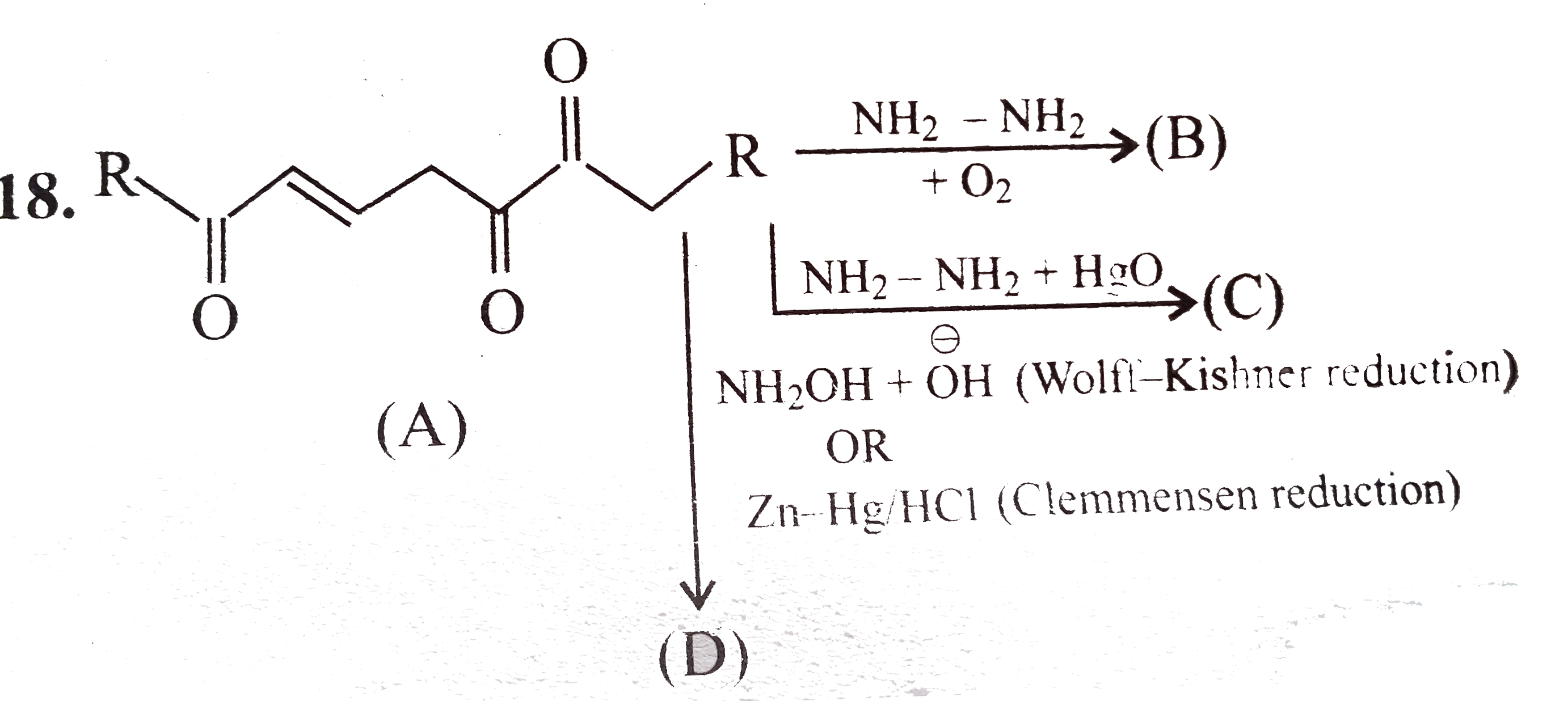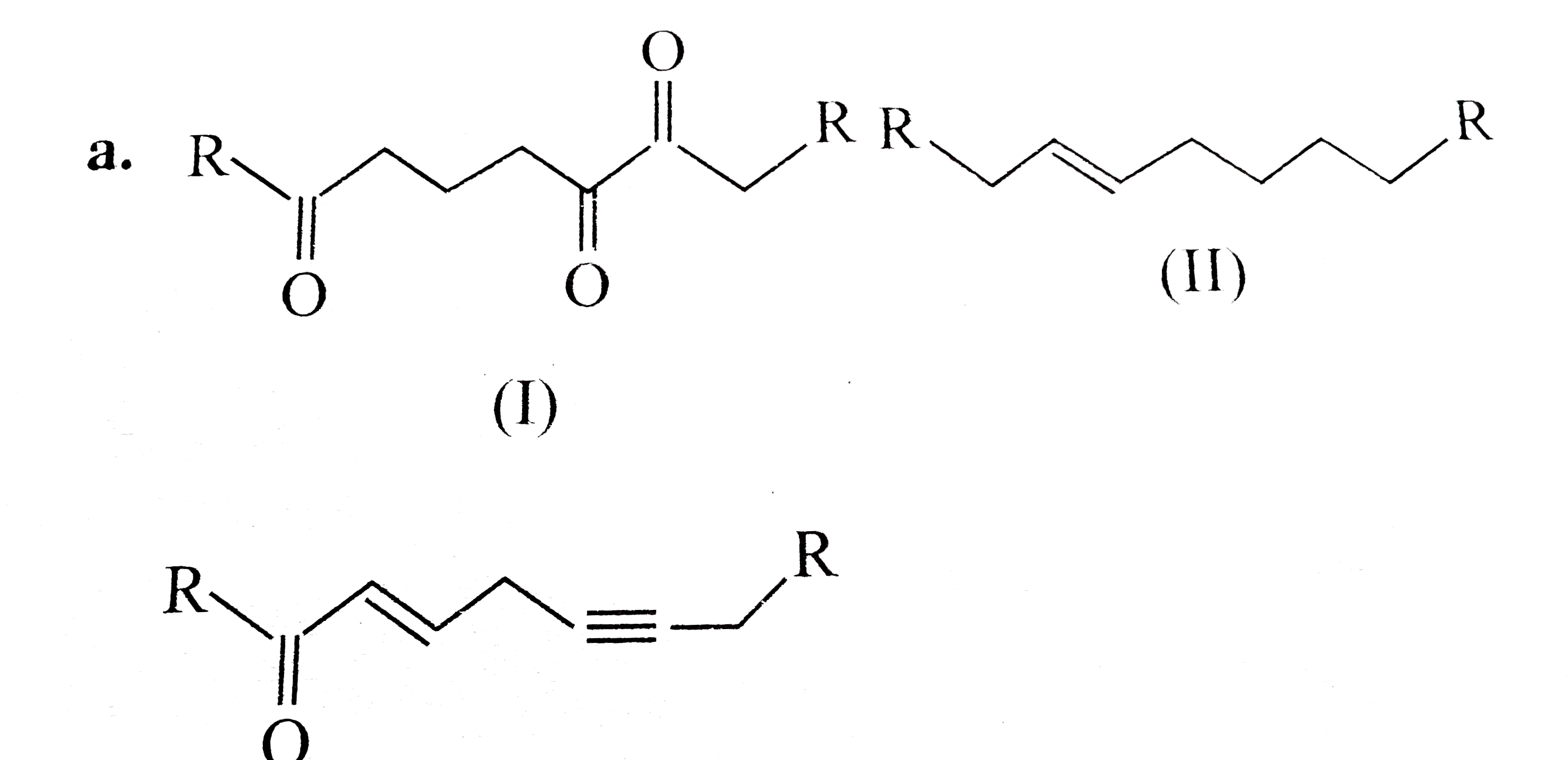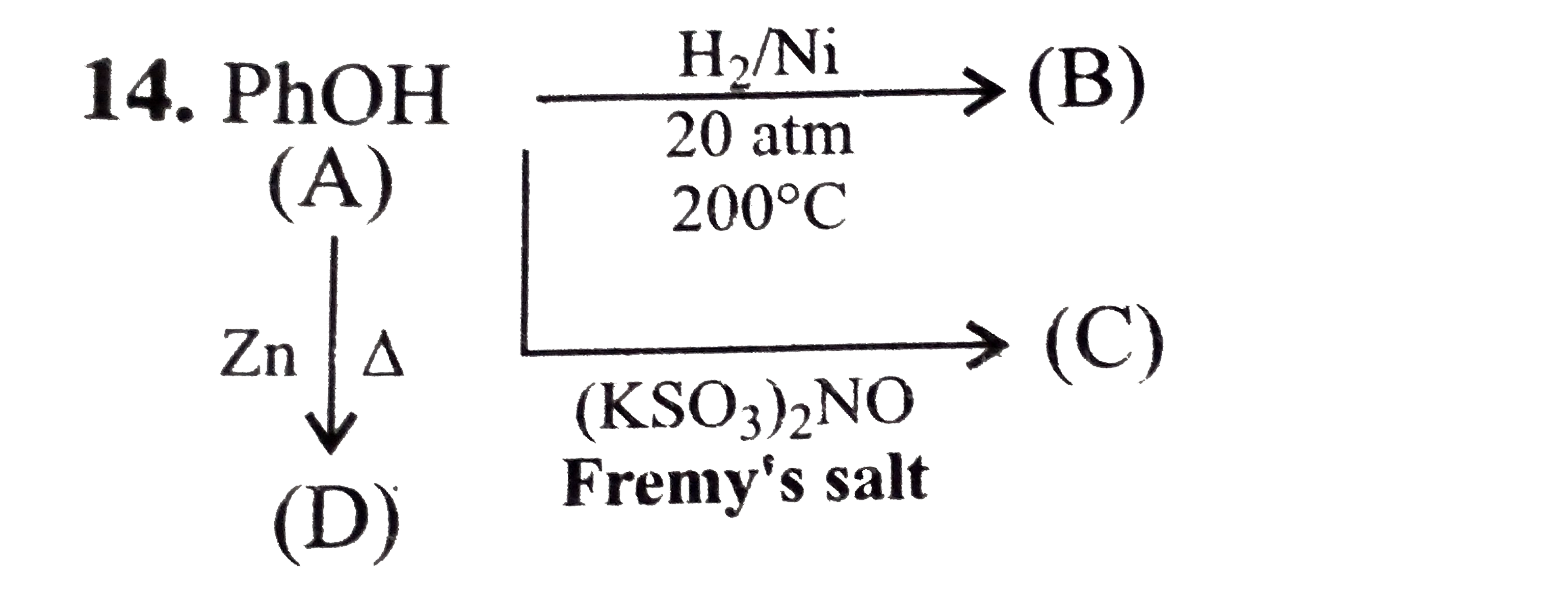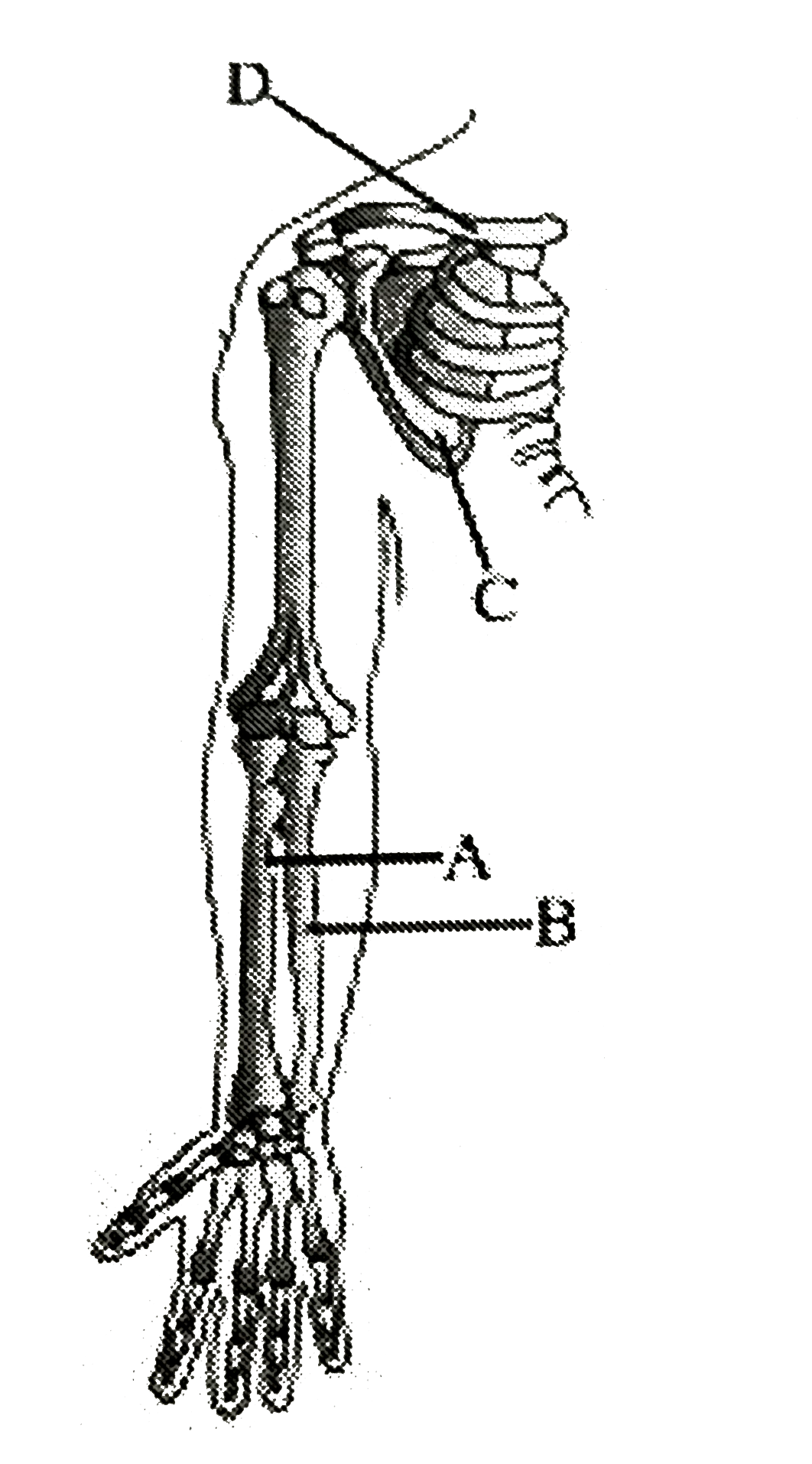
(B), (C), and (D), respectively, are

(b) (I), (III), (II)
(c) (III), (II), (I)
(d) (III), (I), (II)
The correct Answer is:B
Reagent NH2NH2+O2 converts double bond to single bond.
Reagent NH2NH2+HgO converts α-diketone to (≡). Reagent Wolf-Kishner of Clemmensen reduction converts  group to (−CH2_) group.
group to (−CH2_) group.
So the answer is (b).
Topper's Solved these Questions
- BOOK - CENGAGE CHEMISTRYCHAPTER - ALKYNESEXERCISE - Exercises (Archives - Single Correct Answer Type)6videos
ALKYNES
- BOOK - CENGAGE CHEMISTRYCHAPTER - ALKYNESEXERCISE - Exercises (Archives - Fill in the Blanks Type)3videos
ALKYNES
- BOOK - CENGAGE CHEMISTRYCHAPTER - ALKYNESEXERCISE - Exercises (Multiple Correct Answers Type)25videos
ALKYNES
- BOOK - CENGAGE CHEMISTRYCHAPTER - ALKENES AND ALKADIENESEXERCISE - Single correct Answer14videos
ALKENES AND ALKADIENES
- BOOK - CENGAGE CHEMISTRYCHAPTER - APPENDIX - INORGANIC VOLUME 1EXERCISE - chapter-7 Single correct answer1videos
APPENDIX - INORGANIC VOLUME 1
Similar Questions
If →a ,→b ,→c ,→d are the position vector of point A,B,C and D , respectively referred to the same origin O such that no three of these point are collinear and →a + →c = →b + →d , than prove that quadrilateral ABCD is a parallelogram.
View SolutionIf →a,→b,→c,→d are the position vectors of points A,B,CandD, respectively referred to the same origin O such that no three of these points are collinear and →a+→c=→b+→d, then prove that quadrilateral ABCD is a parallelogram.
View Solution
Knowledge Check
- Question 1 - Select One

The compounds (B), (C ), (D), respectively are:ACyclohexanol, benzene, and p-quinoneBBenezene, cyclohexanol, and p-quinopneCp-Quinoue, cyclohexanol, and benezeneDCyclohexanol, p-quinone, and benzene - Question 2 - Select One
Figures 9.6 (a), (b), (c), and (d) respectively correspond to
 Athe short-sighted eye, the correction of long-sight, the long-sighted eye and the correction of short-sightBthe short-sighted eye, the correction of short-sight, the long-sighted eye and the correction of long-sightCthe long-sighted eye, correction of short sight, the short-sighted eye and the correction of long-sightDnone of these
Athe short-sighted eye, the correction of long-sight, the long-sighted eye and the correction of short-sightBthe short-sighted eye, the correction of short-sight, the long-sighted eye and the correction of long-sightCthe long-sighted eye, correction of short sight, the short-sighted eye and the correction of long-sightDnone of these - Question 3 - Select One
Choose the correct option for label (A), (B), (c ) and (D) respectively in given diagram.
 ANode of Ranvier, Trigger zone, myelin sheath Nissl's granuleBSchwan cell, Trigger zone, synaptic knob Nissl's granulesCNissl's granule, synaptic knob, cell body Schwann celDSchwann cell, Synaptic knob, Trigger zone, Nissl's granules
ANode of Ranvier, Trigger zone, myelin sheath Nissl's granuleBSchwan cell, Trigger zone, synaptic knob Nissl's granulesCNissl's granule, synaptic knob, cell body Schwann celDSchwann cell, Synaptic knob, Trigger zone, Nissl's granules
In given diagram A, B, C and D respectively represents :-
 View Solution
View Solution
A,B, C and D are respectively:View SolutionIf Rs 2574 is divided in the ratio of 3:8:10:12 among A, B, C and D respectively, what will be the share of D?
View SolutionIf Rs 3870 is divided in the ratio of 14:12:15:4 among A, B, C and D respectively, what will be the share of B?
View SolutionIf Rs 3276 is divided in the ratio of 6:13:15:8 among A, B, C and D respectively, what will be the share of A?
View Solution

